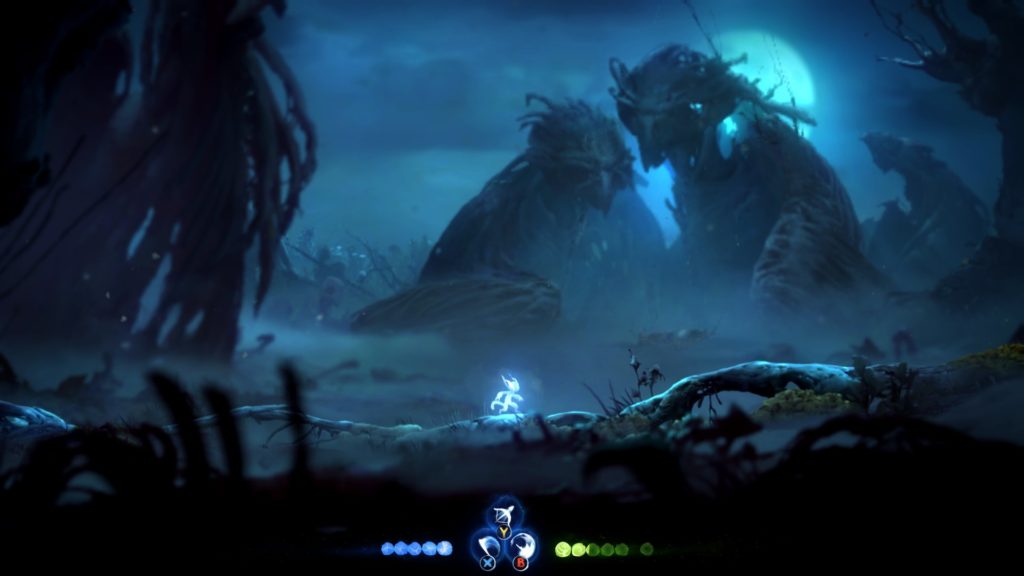- Genre: Pinball/Metroidvania
- Platform: PS4
- Also Available On: Steam, Xbox One, Switch
Talk about a pleasant surprise. That genre listing up there isn’t wrong. This is a pinball game that’s also a Metroidvania. It’s a completely batshit blend of genres…..and it works. It’s a bit of a baffling game to start, but once you fall into how the game functions it feels far more natural than it should.
It’s a bit strange to play a Metroidvania that only has three main controls – joystick to move when you’re on the ground and two buttons for flippers. That’s it. This game gets away with it by really compartmentalizing the experience into rooms that fit the pinball side of the game. Each pinball table is less about being a pinball score running marathon, and more about solving a pinball oriented puzzle. How can you get an explosive over to the rock that keeps getting in your way? Can you light up a row of lights by repeatedly hitting a bumper element to unlock a door? Can you reliably keep hitting a spinner to push you forward? Can you really hit a tough angle to run up a chute and on your way? It’s all obvious stuff in a pinball game, but it works well as a puzzle experience within a larger game.
This all comes together in the handful of surprising boss fights. Consistency is the key here where hitting targets randomly doesn’t do you any good. You’ve got to hit specific targets quickly and repeatedly in order to push the bosses through their phases. That’s not to say you do that for any danger purpose, but just to get through the fight as efficiently as possible.
The surprising mechanic in all of this is that there’s no damage and no death in the game. Sure, you can fall out of the bottom of the pinball tables, but you get shot right back up and at most you might lose a couple pieces of the fruit-based currency. You won’t lose progress, you won’t hit game overs, and you just kind of move on with your life. The challenge therefore is entirely in execution of the mechanics in an efficient way, and never about playing it safe in order to preserve your lives. It feels appropriate for the game to be this way, and it lets the game really focus on being challenging on its own one room at a time, rather than artificially through progression loss. It’s honestly a way to handle games that I’d prefer to see more often.
So then you might ask, how does the Metroidvania part of all this fit in? Beyond just travelling for the sake of travelling, there’s some good use of genre expectations to allow you to re-traverse areas. Finishing pinball rooms leave them in a completed state, allowing for faster general movement the second time through. Pushing through the story unlocks some options that open up new ways to get through previous areas, such as the ability to dive into water or grab onto grapple points for climbing purposes. It’s generally obvious targets, but in a game that revolves around rolling a ball through the world, I was constantly surprised by how smooth the whole re-traversal aspect integrated itself into how I was playing.
This is a pretty unique one. It’s a strange mix of genres that works out well as a combined experience. It’s relatively short (I platinumed it in about 10 hours), but hits that nice place where it doesn’t wear out its welcome and you’re still having fun at the end. I’ll readily admit that I picked it up on a whim when I saw it was under $10 for a disc and had a good Metacritic rating, but given how much I love Metroidvanias, I’ll consider it a happy accident and go on recommending that people check this one out.



